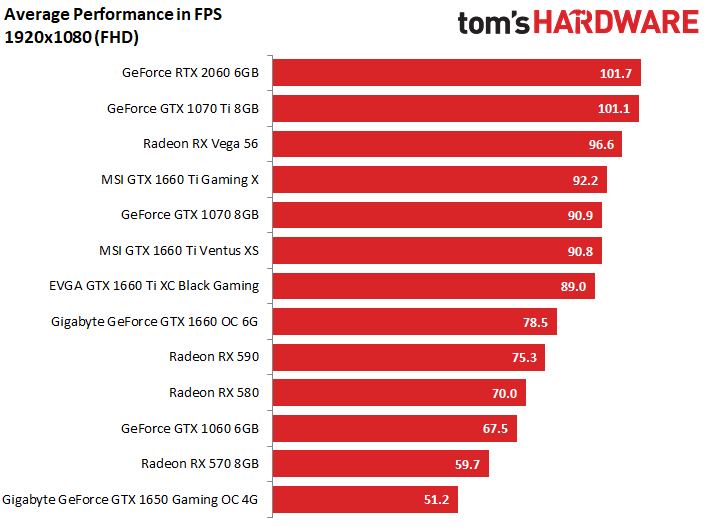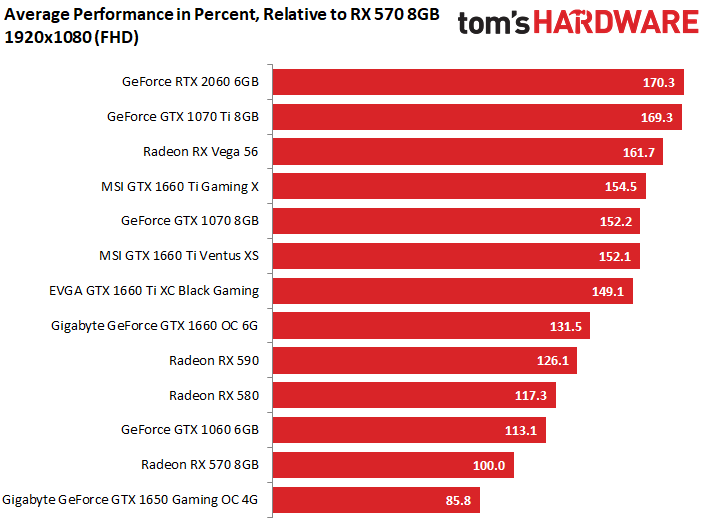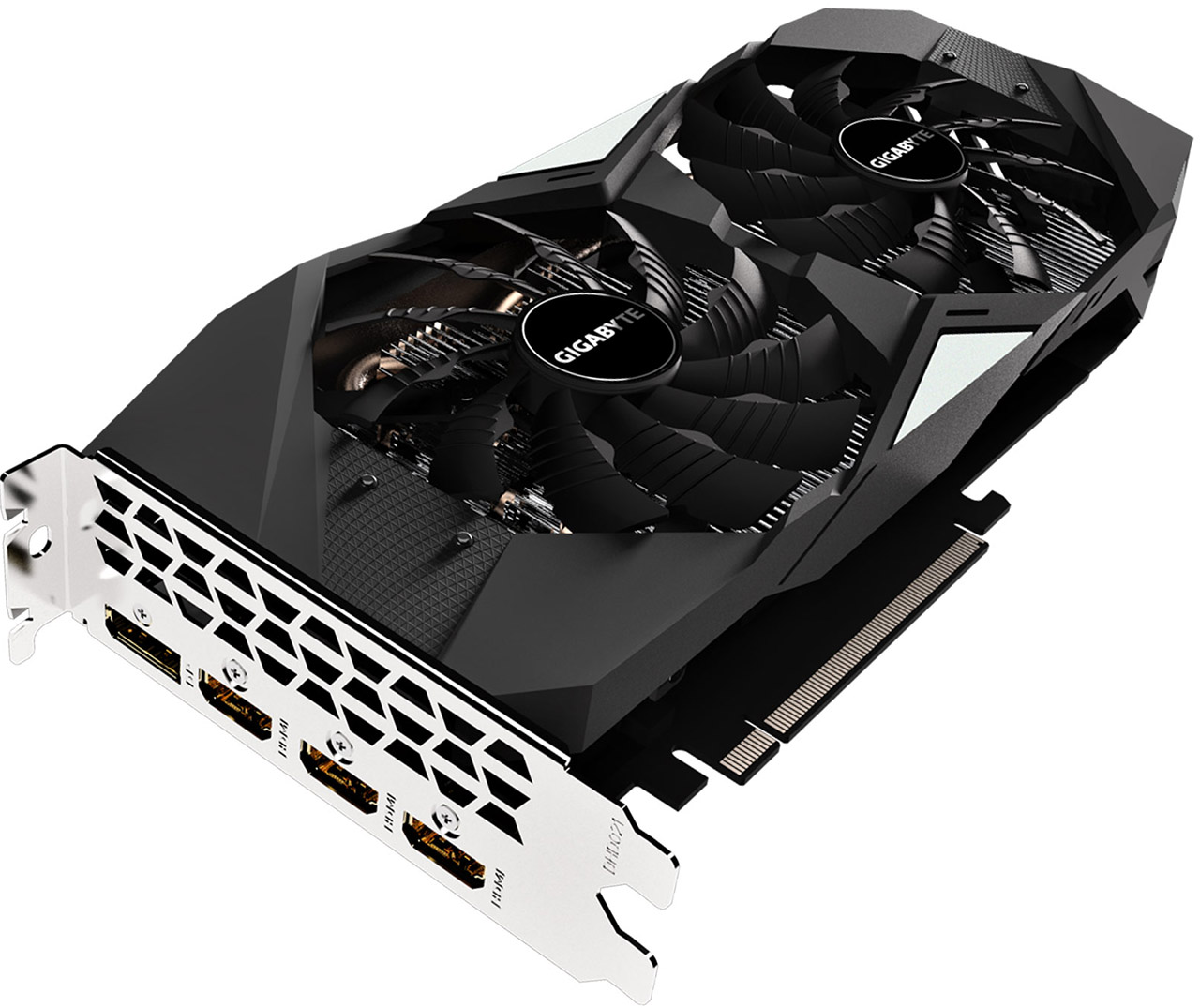Nvidia GeForce GTX 1650 4GB Review: This Turing Fails the Test
Why you can trust Tom's Hardware
Conclusion
The mainstream graphics market is especially unforgiving. A few frames per second, a few dollars, a few watts of power consumption, or a de-featured encoder can sway comparisons one way or another. That’s bad news for Nvidia’s new GeForce GTX 1650. Depending on the card it’s up against, the 1650 can be made to look great or downright lackluster, which is a problem. The TU117-based GeForce shouldn’t come up so obviously short in any metric.
There’s no doubt that the 1650 is slower than Radeon RX 570. Worse, you can find the Radeon in 4GB trim for $20 less than the least-expensive 1650. We recommend stepping up to an 8GB Radeon RX 570 for a few bucks more. After all, even the higher-capacity version starts $10 cheaper than the base-level GeForce GTX 1650.
When you start eyeballing higher-end partner cards like our GeForce GTX 1650 Gaming OC 4G, Nvidia’s positioning really gets out of whack. Rather than spending $180 on the same class of card, why not spring for a Radeon RX 580 instead? Or, go with a GeForce GTX 1660 for $220. It’s a far better-performing card. This isn't the segment able to tolerate $10 bumps in exchange for a few more megahertz and RGB lighting.


One of GeForce GTX 1650’s biggest selling points is its 75W TDP, which makes entry-level Turing a great upgrade for office PCs without an enthusiast-oriented PSU. The card we tested is aimed at overclockers, so we weren’t surprised to discover that it requires auxiliary power. But we would have been far more impressed by a 1080p gaming card able to get all the current it needs from a PCIe slot. While we appreciate that Nvidia’s Turing architecture makes it possible to nearly match Radeon RX 570’s performance at half the power budget, the benefit of such a distinction is easy to lose on an expensive, factory-overclocked board configured to require a six-pin connector.
GeForce GTX 1650 does well compared to the performance of GeForce GTX 1050 Ti, the original price of GeForce GTX 1060, and Radeon RX 570’s power consumption. It’s just not the all-around winner it could have been. We were big fans of the GeForce GTX 1050, so maybe a card without the six-pin connector would change our minds.
MORE: Best Graphics Cards
MORE: Desktop GPU Performance Hierarchy Table
Get Tom's Hardware's best news and in-depth reviews, straight to your inbox.
MORE: All Graphics Content
Image Credits: Tom's Hardware, Nvidia
-
Thanks for the Review....I think the RX 570 is still going strong and ahead of the GTX 1650..This TURING entry-level GPU seems to have poor price/performance ratio though.Reply
EDIT, Btw, you are correct about the all the points which you have mentioned under CON, including the last one as well. GTX 1650 lacks Turing NVENC Encoder, packs Volta's Multimedia Engine.
https://www.techpowerup.com/254861/nvidia-gtx-1650-lacks-turing-nvenc-encoder-packs-voltas-multimedia-engine -
renz496 nvidia most likely did not intend this card to be price/performance king. they most likely banking on it's power efficiency to gain momentum in similar way to GTX750ti and GTX1050ti before. right now this is the fastest sub 75w GPU. nvidia probably can be more aggressive on the pricing but this generation their attention is mostly on the mid range. hence we saw much aggressive pricing with GTX1660ti and GTX1660.Reply -
TMTOWTSAC I think the GPU itself makes sense, but this partner board doesn't. For users who would otherwise have to purchase a new PSU you can charge a price premium. Take that away and actually charge more for it, while offering less performance per dollar? I've never understood the partner board mentality of tricking out a lower tier model until it costs more than a higher tier while still falling short of its performance.Reply -
cryoburner Reply
I wouldn't expect all that much more from it. The 1650 is already pushing the limits of what this graphics chip can do within a 75 watt power envelope, and even this $180 factory overclocked model that requires an external power connector performs around 10% below an RX 570 on average. The 1650 Ti will probably manage to outperform the RX 570 and 1060 3GB, but that card is expected to start around $180 for the base models.Diabl0 said:Waiting for 1650Ti
And that's the biggest problem with these cards. They are terribly priced. 2 1/2 years ago, the 1050 launched with a $109 MSRP and the 1050 Ti launched with a $139 MSRP. The 1650 is already launching for a higher base price than the 1050 Ti launched for, and the 1650 Ti will be launching for a price not far below what the 1060 3GB and RX 480 4GB were back in 2016, for performance that will likely not be much better. If you wanted that level of performance for that price, you could have had it years ago. And at this point, you can get that level of performance for around $130 with an RX 570. If these cards were priced closer to what the previous generation hardware launched for, perhaps starting around $120 for the 1650, and $150 for the 1650 Ti, they would have been decent options. They're priced at least 20% higher than they should be though.
About the only real advantage these cards hold is that they have low power draw, allowing them to run on low-end 300-350 watt power supplies found in some pre-built systems, at least assuming you get a card that doesn't require a PCIe power cable, but those will likely perform slightly behind what's shown here. -
Loadedaxe I had high hopes for this card. I almost bought a RX 580 4GB on sale for $149. last month. Now I found a RX580 4gb on sale for $169.Reply
Sorry nVidia. You will have to do better in this price range. Maybe if it cost $129...but not $179 -
salata I am looking for the GPU for my OEM Dell. This card does not perform to justify the price now. For me is better to consider replacement including moding my MT case in order to fit ATX psu and RX580 or 1660. This card should 30-40 bucks cheaper for me to consider buying it. I'm as well fine waiting for NAVI 12 based 75W GPU.Reply -
How did this review thread/Topic land here, under Graphics cards sub-forum ? Shouldn't it supposed to be here:Reply
https://forums.tomshardware.com/forums/reviews-comments.67/ -
escksu This card isn't really a fail.... It may be sucky as a normal desktop card but its the fastest low profile GPU out there and it doesn't require additional power. Anyone who has a small casing and need additional juice, this is the best card for them!!Reply -
cryoburner Reply
Except it's not a low-profile card. Looking on PCPartPicker, every 1650 that's available right now is a full-width card. There is apparently one low-profile Zotac 1650, but it's not stocked by any US retailers tracked by PCPartPicker at this time...escksu said:This card isn't really a fail.... It may be sucky as a normal desktop card but its the fastest low profile GPU out there and it doesn't require additional power. Anyone who has a small casing and need additional juice, this is the best card for them!!
https://pcpartpicker.com/products/video-card/#c=443&sort=price&page=1
Further, a majority of them DO require external power, including the one tested for this review, and the ones that don't tend to perform a little slower.
That's not to say the card is useless though, and for someone looking for a budget card for a pre-built system with something like a 350 watt PSU, it could make sense (provided they are not trying to fit it in a slim case).

